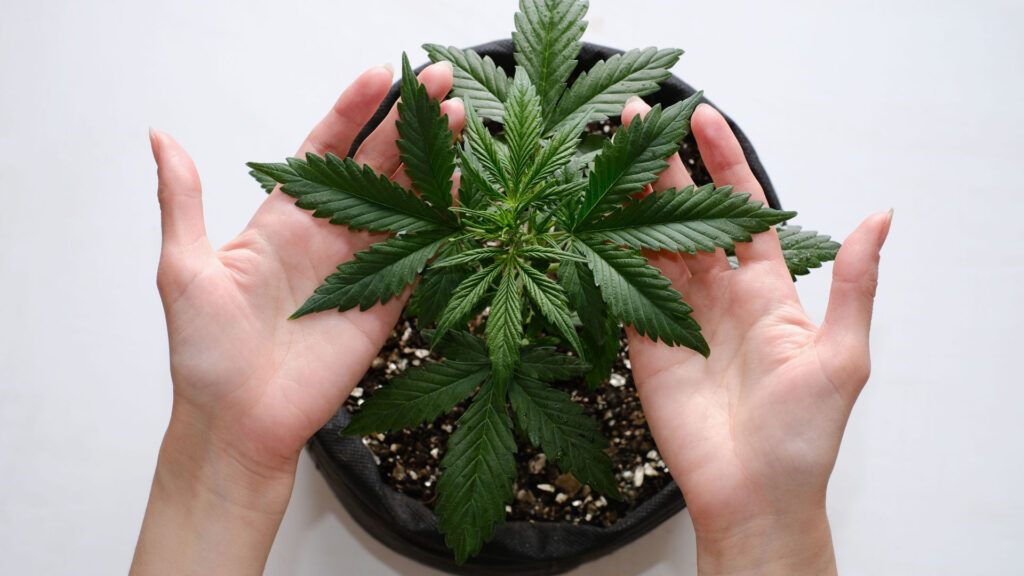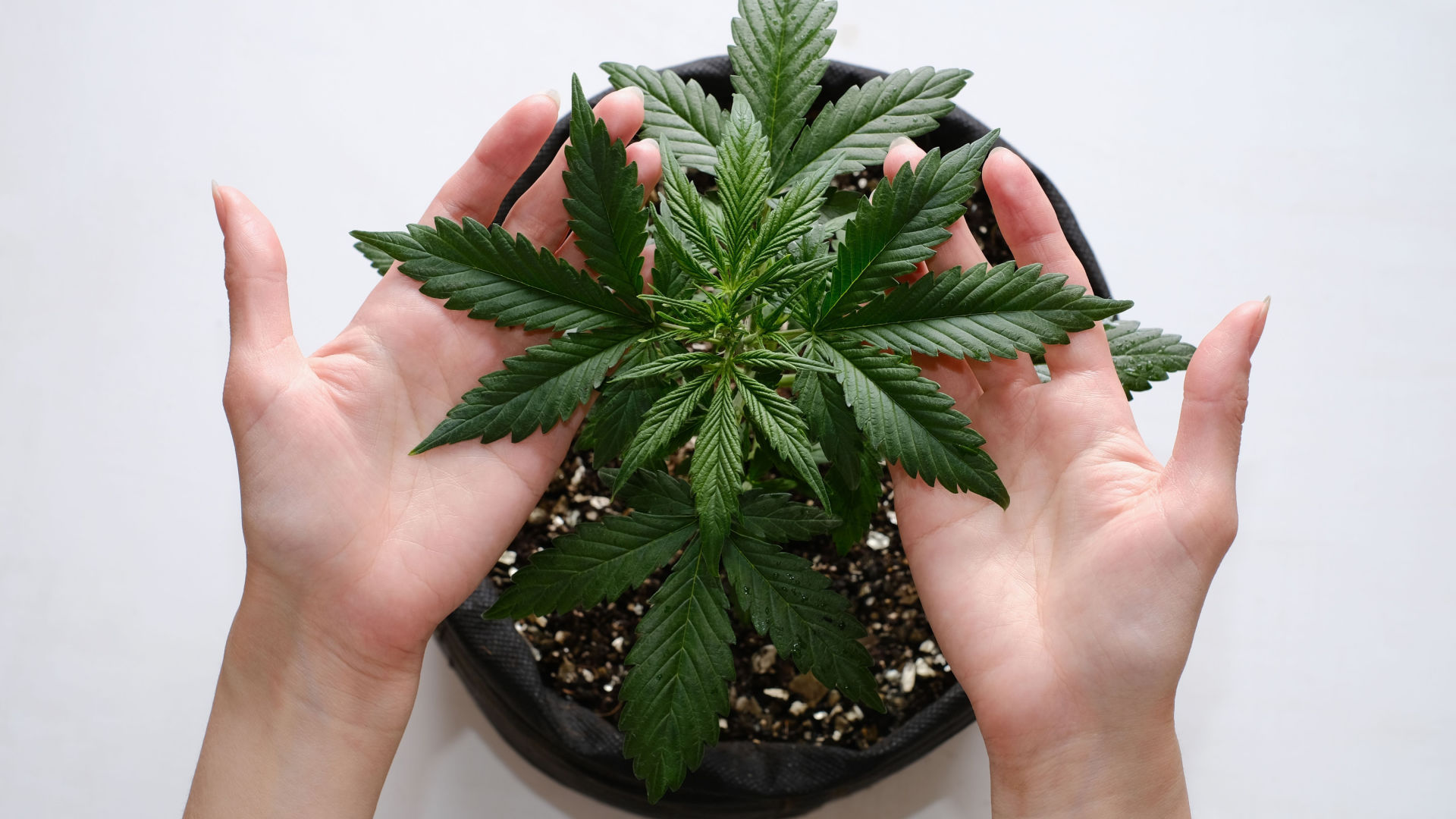Water alone simply isn’t enough for energy production for marijuana nutrients

The most consistent answer to this question is, they fail. In the same way that a car will fail without oil and gas. The same way in which the human body will fail without food. But, can it be done within the cannabis world? Can you grow cannabis without adding marijuana nutrients?
Can a grower achieve any type of yield if no marijuana nutrients are added to the soil? It depends on a few factors, particularly the soil or medium where the plant is growing.
Keep reading to find out what happens if you don’t give your plant nutrients.
The 101 on Marijuana Nutrients
With any plant or animal in the world, both macro and micronutrients are needed to thrive. Plants themselves need about 20 nutrients. These nutrients are the fuel for producing awesome cannabis plants.
During each stage of growth (germination, vegetative, and flower), different nutrients are needed. Cannabis plants need three main macronutrients to feed and thrive – potassium, phosphorus, and nitrogen. They also need the micronutrients calcium, magnesium, and sulfur. Different levels of each nutrient are called upon during specific growth phases.
For example, the vegetative stage is the period of growth after germination that lasts 2-8 weeks but does not yet produce flowers. This stage requires higher levels of nitrogen and potassium, along with a splash of phosphorus. The plant utilizes these nutrients to grow strong stalks and begin its upward ascent toward the lights. Branches begin to develop and alas, baby flowers slowly start to sprout. When it comes time to flip the lights to 12/12 (twelve hours of dark, and twelve of light) and head into flowering, the proper marijuana nutrients can make a huge difference in the quality of the plants. Bad vegetative plants can lead to weaker yields in the flowering stage.

In the flowering stage, less nitrogen is needed while phosprhorus takes the wheel. The nutrients being used are constructing the fruit of the plant and are crucial — imagine building a house and trying to add a roof without any shingles.
Cannabis plants need nutrients, hands down.
Are There Nutrients in the Grow Medium?
This is an important question. You’ve heard about nutrients but what about the grow medium?
Some types of soil like generic store-bought, coco, or rockwool cubes come without any added nutrients. Other mediums, like living soil, will be infused with nutrients from the get-go. Knowing what is in your soil or grow medium beforehand is crucial. You need to know precisely how many nutrients to add or not add.
Here’s an example. There are zero nutrients in Rockwool cubes. If a grower chose the hydroponics system and used these cubes, they will need to add everything the plant needs from day 1. Unless water from the tap is used, there shouldn’t be anything able to affect your plants.
A Quick Note on Growing with Tap Water:
Unfortunately, there is usually chlorine along with anything from the tap. Although cannabis does need a little chlorine, it’s going to work against you in the long run. It can prevent any other nutrients present in the tap water from absorbing into the plants.
The #1 recommendation, regardless of medium, is to only use water that has gone through the process of reverse osmosis. This process of water purification uses a semipermeable membrane that filters out contaminants, salt, and dirt. All of these can affect your plants and their pH levels. You can purchase it at the store or an online grow depot.
The real question, why on Earth would a grower ever use tap water for growing in the first place? The first answer would include saving on cost. A plant takes about 6 gallons of water per day, so it depends on how many are present. Tap water isn’t expensive. A home grow might only have a few plants to water, but a commercial grow might have over a thousand licensed plants.
Tap water is totally fine for big grows. I have seen it produce fine cannabis for over 1,000 plants. If running a grow this size, management should consider investing in an RO filter system. I utilized one at my last grow house in Denver and it produced RO water without effort while saving money. They cost between $500-$2,800 based on the size and are worth it if you can afford one.
A second reason to use tap water – unless you have the expensive filtration system, RO water may not always be readily available for purchase. In the time of a world pandemic, items for growing have been known to run low or out of stock. That includes supplies at the local grocery store and online grow depots. Tap water will be plenty OK to keep your grow going.
The final answer, of course, are the time constraints surrounding the process. Using tap water can save time for growers. Life is short and people are busy, and that’s just fine.
Which Soil Are You Using?
Consider what would happen when buying regular soil at the store, which is what most home gardeners turn to in normal plant-growing circumstances. When it comes to cannabis, will there be enough macronutrients for the entire grow without needing to add more? Possibly, but that’s not the whole story.
More than likely, the cannabis plant would use what little nutrients are in the soil, yield a bit, then slow as the food source dwindles. Technically, you would have grown weed without using nutrients. In general though, these pre-made mixes will need fortification to grow your plants to their full potential. Unless buying “living soil”, that store-bought bag will be virtually an empty plate. You will need to add some.
The Method of Growing Without Marijuana Nutrients
Assuming it isn’t cheating by our definition of “no nutrients,” living soil would be the choice.
Ocean Forest Soil, for example, is completely organic and fortified with goodies from the sea. See the review. It includes fish and crab meal, bat guano, earthworm casings, and more. All of these create macro and micronutrients your plants will use to thrive. Best of all? Nothing needs to be added.
One could argue that naturally occurring sources of food are much better than the many salts of chemically enhanced fertilizer. Living soil delivers a very clean cannabis product at the end, especially when flushed and cured properly.
Now pretend the judges have ruled, “Living soil is cheating. It must be regular soil without fortification of any sort.”
What might happen if you don’t give your marijuana nutrients?
An Ugly, Shining Example
An old friend, call him John, might have been the laziest grower in Denver. In fact, he was hardly a grower at all. Just a guy who planted a cheap seed in a pot of dirt and crossed his fingers.
Was he adding nutrients? Absolutely not.
Was he watering? Yes, but that’s about it. His official excuse for not trying very hard were concerns over grasshoppers and other critters ruining the plant. Why bother investing money if pesky insects are going to eat it up? He planned to let Mother Earth takeover and do what it did best.
If he had used living soil, or added any nutrients to this poor plant whatsoever, he might have gotten a decent yield. Instead, this poor plant only coughed out an eighth (3.5 grams) before dry and trim. The lack of nutrients was likely the cause of a very weak yield. He needed to feed these plants and BAD.
To answer the question, “Can you grow cannabis without adding nutrients?”
Barely.
Have You Tried Growing with Molasses?
Angie Carreira, a Canadian, cannabis farmer, has a different approach. She is one of those old school growers who does it with just soil and molasses. Wonderful outdoor grows on her farm have turned out very tall plants. She claims that these grows have “smoked like straight fire”. Her indoor plants (found on her IG) are quite prominent as well.
One could argue that the soil has naturally occurring nutrients for growth but certainly not enough. It may have helped but how much? Molasses has key minerals that might help your cannabis plants thrive beyond the limits of fertilizers. Think of the Calcium, Selenium, Magnesium, and simple-sugar carbohydrates – all wonderful sources of food that plants need to boom.
Royal Queen Seeds provided an excellent set of directions. The grower simply adds a 4-5ml of molasses per liter of water. Of the several types and colors of this syrup, unsulphured blackstrap molasses is their recommendation.

